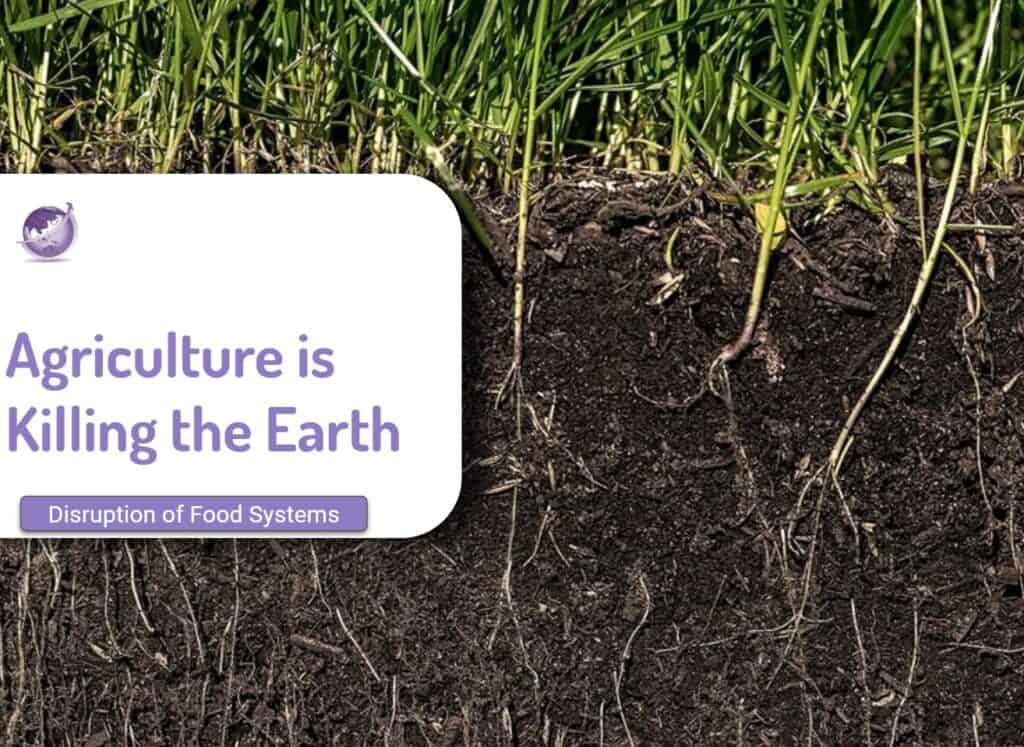In his latest podcast Micheal Liebreich (Podcast 136) Interviews Jim Mellon from Agrinomics about Moos Law of Food Disruption. The average Western diet needs 1000 animals killed. How the disruption of the food industry is ever increasing and Mellon compares it with Moores Law.
Tony Seba of RethinkX and his team talk about the disruption of food using precision fermentation coming to real world by 2024. Their team has this model of disruption of a fracture point which is the followed by the disruption itself.
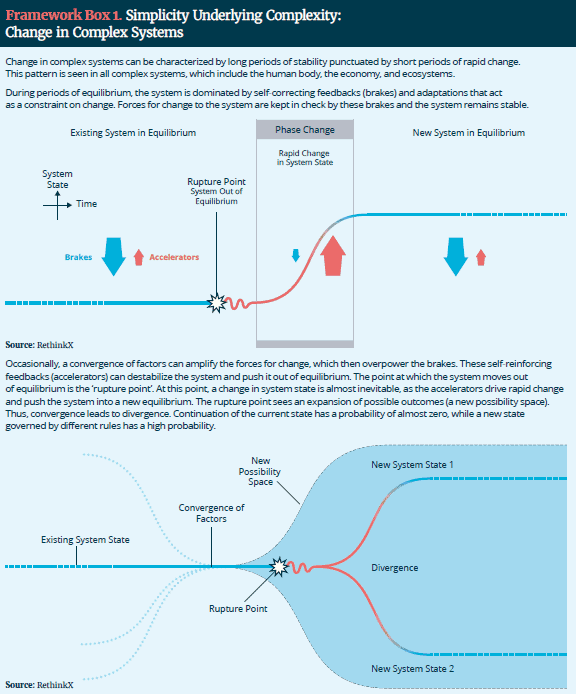
Environment Impact on Food
Food has a very major negative environmental impact.
- About 25 % contribution to emissions
- Cruel practice of intensive farming, as practiced mostly in the United States and in China.
- Better health – 80% of all antibiotics are used in animal production
- 1 in 6 americans a year get sick a year from food borne diseases
- Unsustainable food supply chain
- Unsustainable water demand
- 75% of zoooninic diseases originate from farming
- 80 billion animals killed each year for humans
- 2 trillion fish are killed
Fracture Points
Mellon discusses some of these fracture points.
- Demand is not issue. Key products are eggs (used in bakeries), meat (in pet food), cheese (in baking), Chicken (in asian cooking) and fish
- The limiting factor is factories to build them.
- Estimated $1.4 Trillon to build 3,000 plants around the world for a decade
- By 2050 35% of USA and Europe will be eating most of their food
- Need to compared with food supplement market which is over $50b a year
Tipping Point for the Moos Law of Food
The factors suggesting a tipping point are the following. Seba says that tipping point will be before 2030, whereas Mellon says by 2050 35% of food in western countries will be precision food.
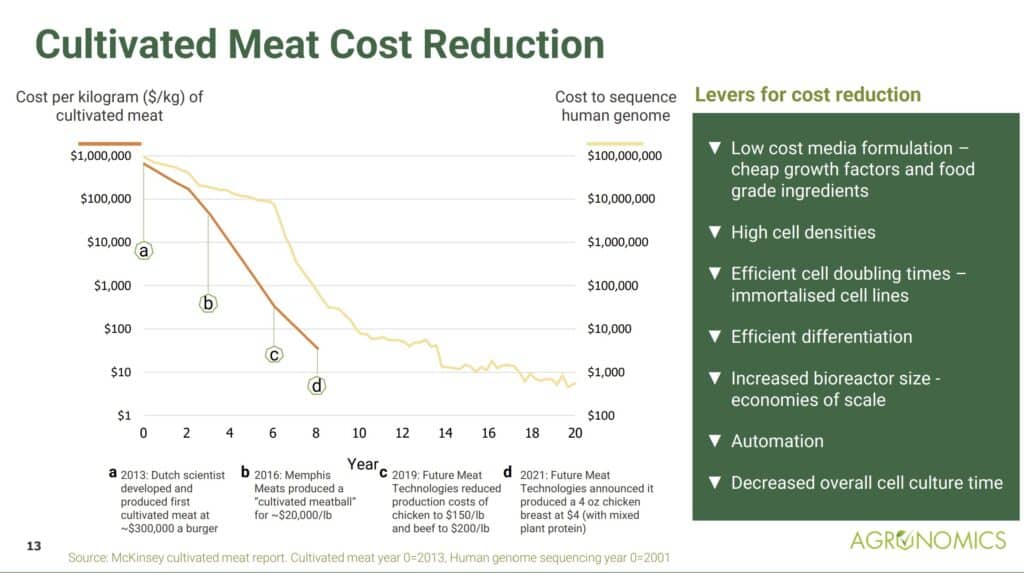
Technology
- Plant based foods have not met the market demand and fallen by 90%. The tipping point is when precision foods are have 5% of the market and it will take 5 years before most see the change.
- Beyond Meat was over enthusiastic, was ultra processed and had a valuation based on a SPAC but was not able to change consumers fast enough.
Market Segments
The total addressable market is over $5 trillion
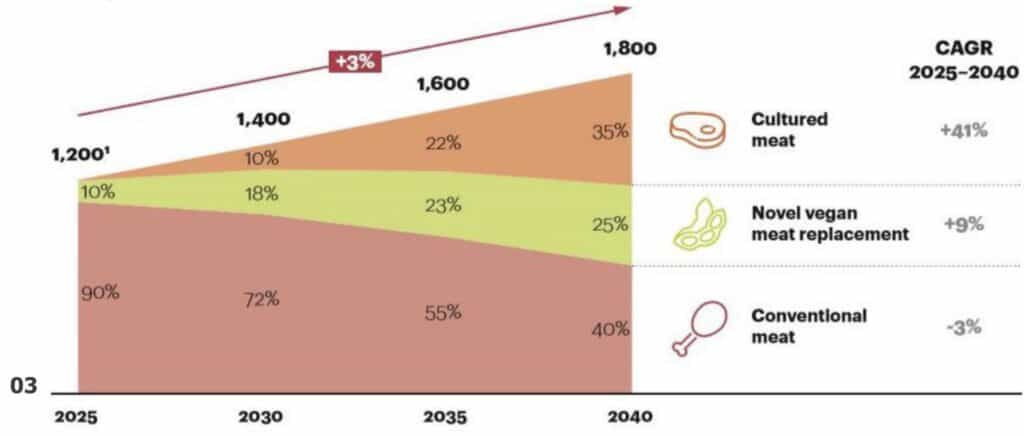
Dairy Market
RethinkX says the low hanging fruit is the protein casein from dairy and then cheese whereas Mellon says that dairy and eggs will be one of the first and that the “Yuk” factor that whole steak / or chicken / fish – will be years ago. That is not the case for hamburger chicken nuggets or ready made fish products.
- Fresh research suggests that at price parity, animal-free cheese will capture a third of the UK cheese market say Food Navigator. This is lower than Mellon or Seba
- Eggs for baking are 60% of the market. Used in baking and pie filling. At the consumer end, customers won’t see this. Moreover external shocks such as avian / bird flu have decimated the flock. Most in the western world have moved from cage eggs to free range for bird cruelty reasons, and so will be supportive of change.
- Pet Food . Currently pet food are eating shavings off the floor, and Good Dog Food is banking that pet meat is 25% of UK and USA is 25% of meat produced
- Products will be incorporated with plant based food and claim
- Slaughter free
- Example is the Japanese tuna fish Blue Lalou, will have product in market produced at $25 versus $85 per pound and there is no cartel against it ($200 .kg)
- Palm Oil is a product that has consumer pressure against it, and this now starts the clean food from both quality and source – such as Oligo in Finland
- Lab grown Leather is the same price as leather from animals
- Products such as collagen currently comes from dead animals and will rapidly change to PF
Regulation
- 60% of eggs go into food – and not seen by consumers. Eggs are approved now and will be in market by Christmas 2023
- Singapore has approved PF foods as has the FDA.
- PF will happen first in countries where there is no strong farming lobby.
- The hundreds of millions of hungry people will provide the PF food producers to expand to feeding hungry and malnourished children – “lets feed the world”
- Multigeneration displacement of how farmed foods have displaced a few hundred million people

Investment in production facilities
- Limiting factor is factories to build them.
- Estimated $1.4 Trillon to build 3,000 plants around the world needed
- The major constraint is existing fermenters are making weight loss drugs, and not food
Opposition to Precision Fermentation Food
- Food cartels will introduce FUD – organised lobby against PF. Note that all it took for cars was 15 years.
- 10 to 15 years will be matter of resistance and the focus will be on whole foods not the food additive markets.
- If carbon tax was to be levied on farm industry then change would be even faster, and farmers could become part of the change – not part of the lobbyists against the process. Smart farmers will see the financial benefits.
- will adapt to produce much of the food PF and decrease their animals.
- May happen faster in countries without farm lobbies.
Precision Fermentation is a system
Fermentation has come a long way from its humble beginning as a technology for household food preservation into a sophisticated technology for the manufacture of pharmaceuticals, biochemicals, enzymes, foods, beverages, and food ingredients at industrial scale. It relies on AI, pharmaceuticals, process engineering, synthetic biology, consumer behaviour and public policy.
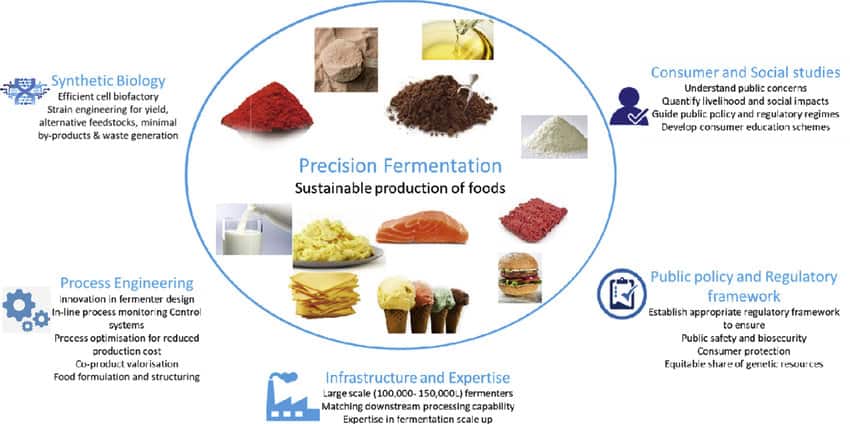
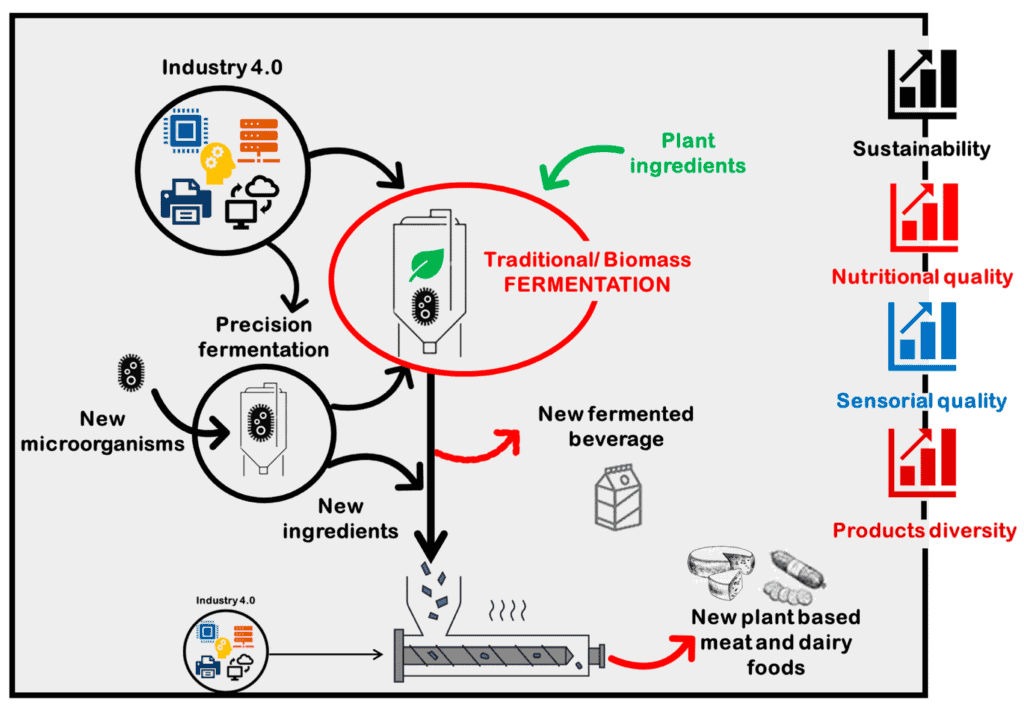
Research Supports Rapid Disruption
Fermentation contributes to improving the organoleptic properties and nutritional profile of dairy and meat alternatives. Precision fermentation provides more opportunities for plant-based meat and dairy manufacturers to deliver a meat/dairy-like experience.
Fatma Bukuid et al 2023 Fermentation for Designing Innovative Plant-Based Meat and Dairy Alternatives

More Reading
- NZ has the energy resources to adopt alternative food technologies – it just needs a plan Feb 2024 https://theconversation.com/nz-has-the-energy-resources-to-adopt-alternative-food-technologies-it-just-needs-a-plan-222348
- Meatable Achieves Landmark Breakthrough In Cultivated Meat Technology, Cuts Production Time To Only 4 Days. Mar 2024 https://meatable.com/news-room/


